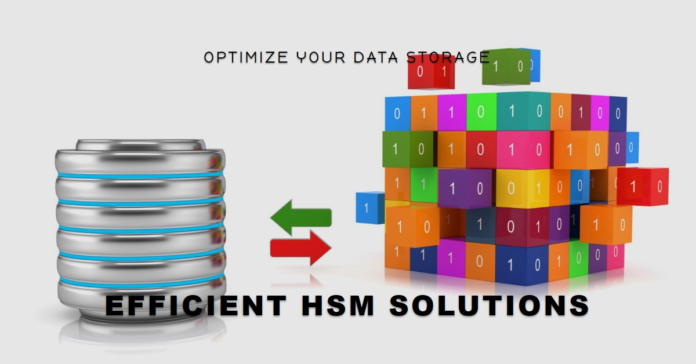In today’s data-driven world, organizations face the challenge of managing ever-growing volumes of information efficiently and cost-effectively. Hierarchical Storage Management (HSM) offers a powerful solution by automatically migrating data across different storage tiers based on value and access frequency. This article delves into the intricacies of HSM, exploring its benefits, implementation considerations, and role in modern data management strategies.
Understanding HSM and Its Core Functionality
HSM operates on the principle of tiered storage, categorizing data based on its importance and usage patterns. High-performance, expensive storage media houses frequently accessed or mission-critical data, while lower-cost, high-capacity storage accommodates less critical or infrequently used information. This approach optimizes storage resources and ensures rapid access to vital data.
The core of HSM lies in its policy-based automation. Predefined rules dictate when and how data transitions between tiers. Stub files, acting as placeholders, maintain a reference to the actual data location even after migration to a different tier, ensuring seamless access for users and applications.
Advantages of Implementing HSM
Adopting HSM offers numerous benefits for organizations:
- Cost Optimization: HSM significantly reduces overall storage expenses by relegating less critical data to cost-effective storage.
- Enhanced Performance: Keeping frequently accessed data on high-speed storage ensures optimal application and user performance.
- Efficient Resource Utilization: HSM maximizes the value of all storage assets, preventing underutilization of expensive resources and ensuring efficient capacity allocation.
- Scalability: HSM systems readily adapt to growing data volumes, accommodating the evolving needs of expanding organizations.
- Data Protection and Compliance: HSM facilitates long-term archival and data protection strategies, ensuring compliance with regulatory requirements.
Implementation Considerations and Challenges
While HSM offers compelling advantages, successful implementation requires careful planning and consideration:
- Choosing the Right Solution: Numerous HSM solutions exist, each with varying features and capabilities. Evaluating organizational needs and aligning them with the appropriate solution is crucial.
- Defining Data Management Policies: Establishing apparent data migration, retention, and archival policies is essential for effective HSM operation. Data age, access frequency, and regulatory requirements should be considered.
- Managing Stub Files: Implementing a robust system for managing stub files is vital to ensure data integrity and prevent broken links.
- Integration with Existing Infrastructure: HSM solutions should seamlessly integrate with backup, archiving, and disaster recovery processes.
HSM in Action: Real-World Examples
Numerous organizations have successfully leveraged HSM to optimize their data management:
- Media and Entertainment: Production studios utilize HSM to manage large volumes of video files, ensuring fast access to active projects while archiving completed works on cost-effective storage.
- Healthcare: Hospitals employ HSM to store patient records efficiently, maintaining immediate access to recent records while archiving older data for long-term retention and compliance.
- Financial Services: Banks leverage HSM for secure and cost-effective transaction data storage, adhering to stringent regulatory requirements for data retention and archival.
HSM and Information Lifecycle Management (ILM)

HSM is crucial in the broader Information Lifecycle Management (ILM) framework. ILM encompasses data management throughout its entire lifecycle, from creation and active use to archival and eventual deletion. HSM is a practical tool for implementing ILM policies, ensuring data resides on the most appropriate storage tier based on its lifecycle stage.
Comparison with Other Data Management Technologies
While HSM excels at managing data across tiered storage, other technologies offer complementary functionalities:
- Data Archiving: Focuses on long-term retention of inactive data for compliance or historical purposes.
- Cloud Storage: Provides scalable and flexible storage resources but may need more granular control and automation of HSM.
- Data Deduplication: Reduces storage requirements by eliminating duplicate data copies.
Future Trends in HSM
The HSM landscape continues to evolve, driven by technological advancements and changing data management needs:
- Cloud Integration: HSM solutions increasingly integrate with cloud storage platforms, offering hybrid storage environments with greater flexibility and scalability.
- AI-Driven Data Placement: Artificial intelligence and machine learning optimize data placement decisions within HSM systems, further enhancing efficiency and cost savings.
- Object Storage: Object storage platforms are gaining traction within HSM due to their scalability and metadata-rich capabilities, facilitating efficient unstructured data management.
Conclusion
Hierarchical Storage Management has evolved into a crucial tool for organizations navigating the complexities of modern data management. In particular, by intelligently automating data placement across tiered storage, HSM optimizes resource utilization, significantly reduces costs, and ensures rapid access to critical information. Specifically, as data volumes surge and technologies advance, HSM will remain a cornerstone of efficient and cost-effective data management strategies. Consequently, it’s adapting to evolving needs and empowering organizations to harness the total value of their data assets.


